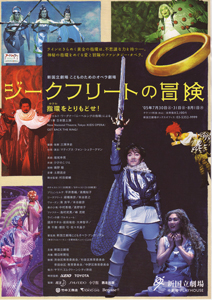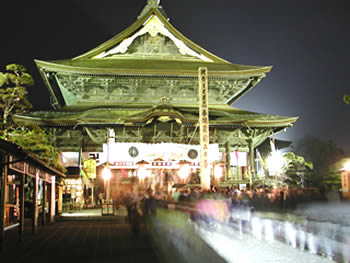As a perfect Wagnerite I could not miss the New National Theater (in Tokyo) production of "Get back the Ring!". It was termed a "Kids Opera", so I expected some changes from the original work, Der Ring des Nibelungen. Actually the changes were substantial. What emerged from a substantial re-interpretation and arrangements from the original work was a "musical", with Brunnhilde portrayed as the beautiful princess and Siegfried as a suitor who would do bold things to win her love. Wotan is the King, who reluctantly, and then wholeheartedly, gives his daughter and the kingdom to the young hero.
All the music was from the original score, but the whole impression was that of a "musical", rather than a "music drama". I realized that the difference between a musical and an opera is not only in the music but also in the (con)text.
The musical format is well accepted in today's highly commercialism-oriented society, but it does not, in its prevalent style, really have a power to make one stop and think about deep issues such as death, life, and love.
The "musical" presented by the New National Theater probably left the kids and their well-meaning parents happy, but I wonder whether the audience were touched in a real sense either directly or indirectly by the greatness of the original work. In the original music drama, a man has to forsake love in order to win political power. There's incest and murder. One is bound by his own commitment in the past, and the space for free will is gradually diminished until one is led to the conclusion that the only way out is total self-denial. Then, when all the entangled elements appear to be just impossible to handle, the redemption by love gives a deeply satisfactory ending to the whole saga.
Although it is certainly a high order to depict all this in a "Kids Opera", I certainly think that it was possible to depict some elements, something that would inflict a benevolent "scar" on a child's heart. Every great work of art leaves a scar on one's mind, and the appreciation starts with the healing process.
"Get back the Ring!" failed to leave a scar, at least on this listener's heart. It was a great opportunity lost, for the kids in the theater and the well-meaning art directors of the New National Theater.
http://www.nntt.jac.go.jp/english/season/s266e/s266e.html 
Poster advertising "Get Back the Ring!"















